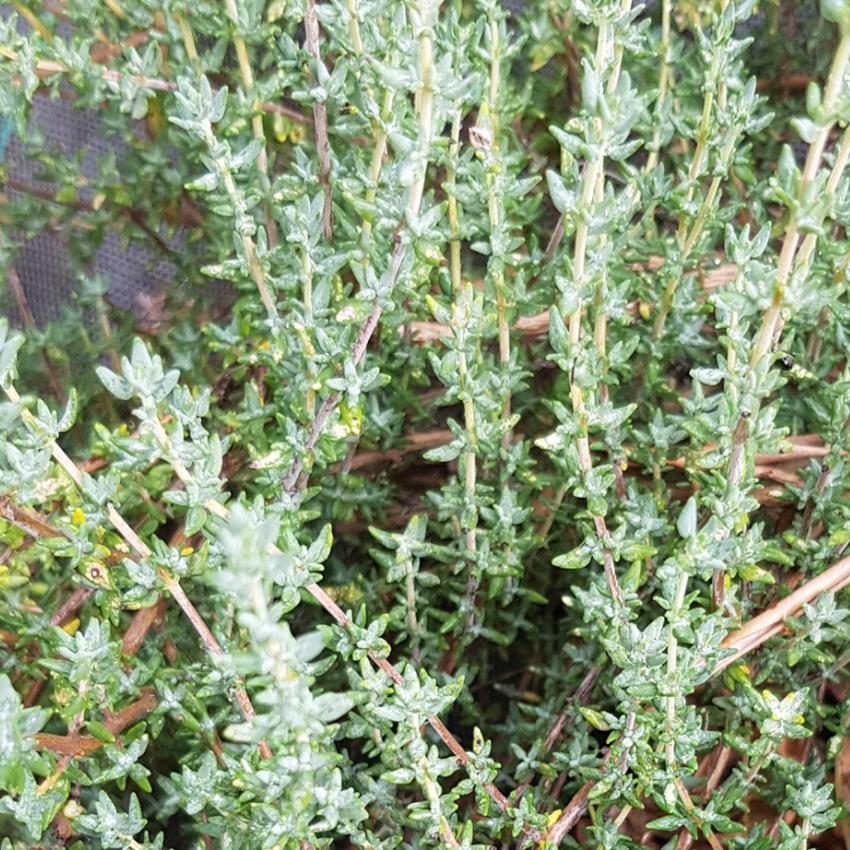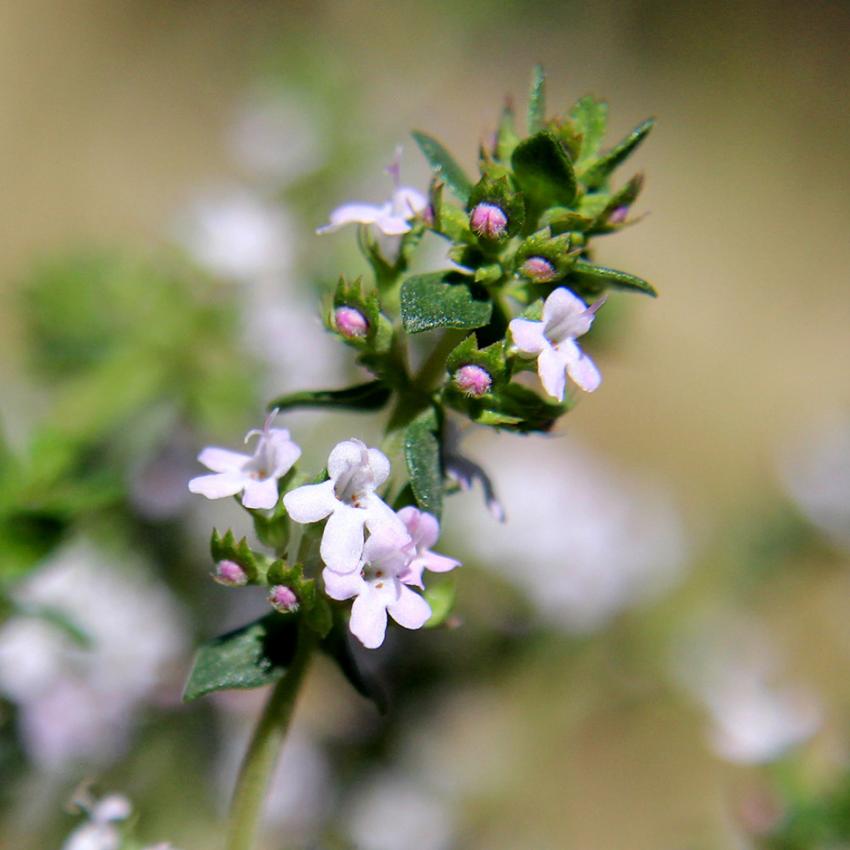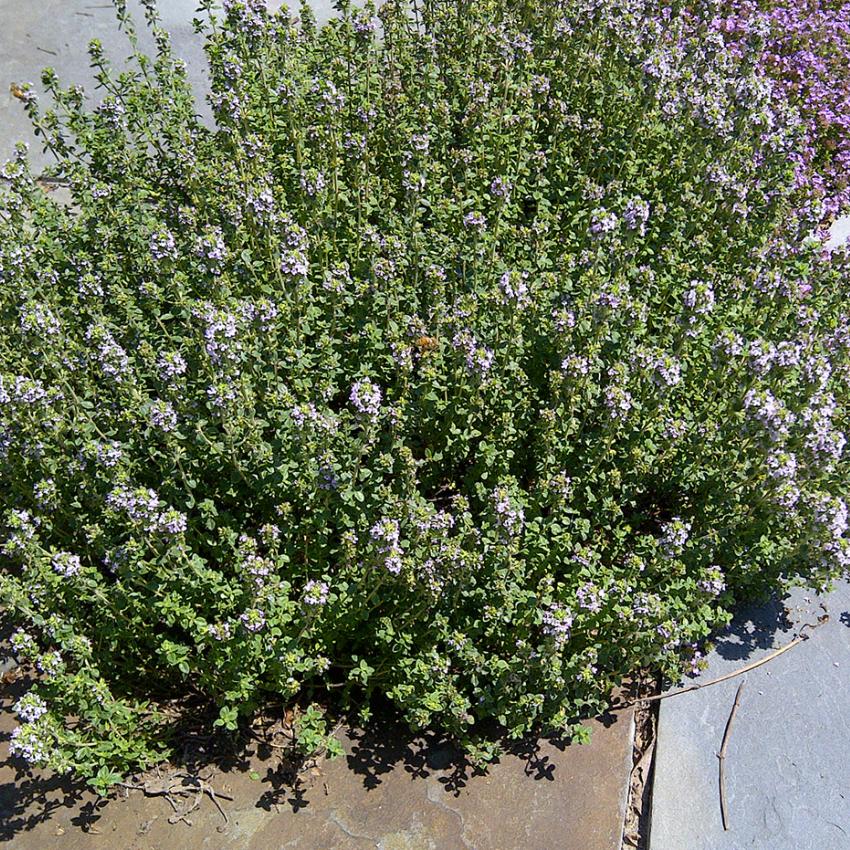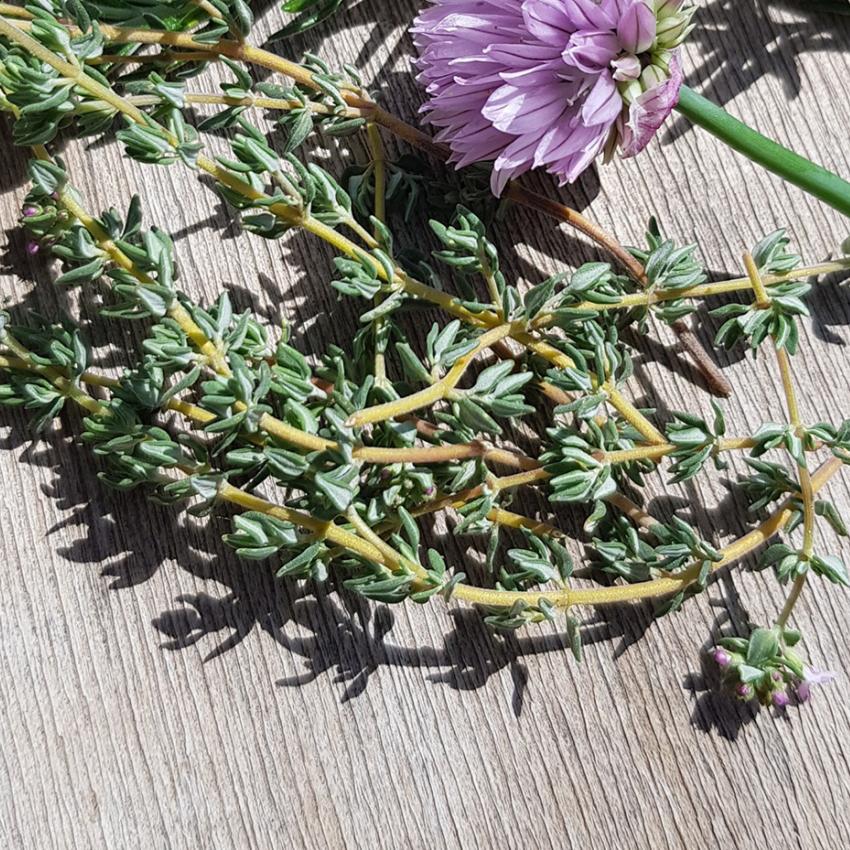



Thyme
Thymus vulgaris
Thyme, is a pungent herb of the mint family (Lamiaceae) known for the aroma and flavour of its dried leaves and flowering tops.Thyme is native to Eurasia and is cultivated throughout the world. Thymes have culinary, medicinal, and ornamental uses, and the species most commonly cultivated and used for culinary purposes is Thymus vulgaris.
Thyme has been used for centuries for different functions. Ancient Egyptians used it for embalming. The ancient Greeks used it in their baths and burnt it as incense in their temples, believing it was a source of courage. Romans used it to purify their rooms and to give add an aroma to cheese and liqueurs. In the Middle Ages, the herb was placed beneath pillows to aid sleep and ward off nightmares. Thyme was also placed on coffins during funerals, as they believed it assured passage into the next life. Before the discovery of antibiotics, thyme oil was used to medicate bandages.
Thyme is sold both fresh and dried. The fresh form is more flavourful, but also less convenient (short storage life). It can, however, last many months if carefully frozen. Fresh thyme is sold in bunches of sprigs. Thyme is also a common component of the bouquet garni, and of herbes de Provence.
Depending on how it is used in a dish, the whole sprig may be used or just the leaves. Leaves may be removed from stems by scraping with the back of a knife, by pulling through the fingers or through the tines of a fork. Usually, when a recipe specifies "bunch" or "sprig", it means the whole form and when it specifies spoons, it means the leaves.

Find the plant...
